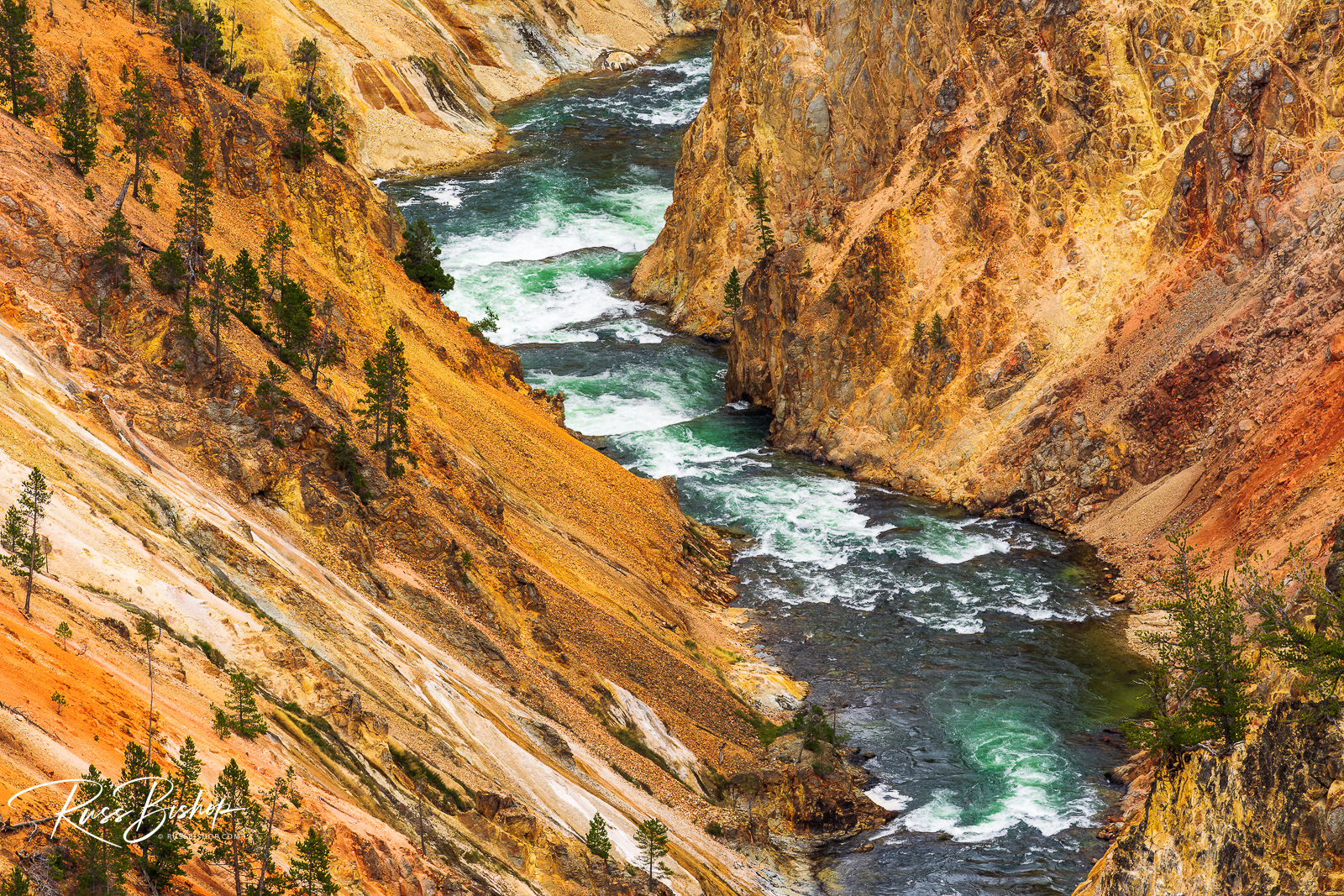
The Grand Canyon of the Yellowstone in Wyoming’s Yellowstone National Park is one of the great wonders of the world. Though not as famous, as large, or as old as Arizona’s grand fissure, what it lacks in size and scope, it makes up for in color and curiosity.
As with much of this hyperactive park, the canyon below the Lower Yellowstone Falls was once the site of a geyser basin. During the last ice age large ice dams formed near the mouth of Yellowstone Lake. Then, when they melted, a huge volume of water was released downstream causing massive flash floods and catastrophic erosion that carved through the soft rhyolite lava flows and created the present-day canyon.
It’s unique colors are also a result of hydrothermal alteration and exposure to the elements. Most of the yellow coloring is the result of iron present in the rock rather than sulfur as most people assume. The exposed rocks are oxidizing and essentially the canyon is slowly rusting.
The Yellowstone River begins on the slopes of Younts Peak, south of the park, and travels more than 600 miles to North Dakota where it empties into the Missouri River. It is the longest undammed river in the continental United States, and it’s evolution continues to shape this beautiful canyon.
©Russ Bishop/All Rights Reserved


